Macro & Close-up Photography using Diopters and Coupled Lenses
Diopter or close-up lenses are a good way to add macro / close-up ability to your current photography gear. They work by screwing or clipping on to the front of your camera's lens, and decrease the minimum focusing distance. This allows you to move your camera closer to the subject, and achieve higher magnification photos.
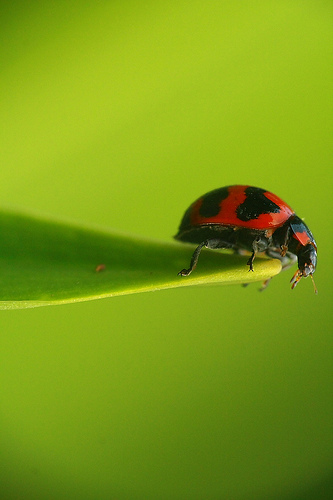
Livin' on the edge by Fountain_Head on flickr (licensed CC-BY)
These close-up lenses work with all cameras where the lens has a filter thread. So they will work with virtually all interchangeable lens camera lenses, and most bridge and advanced compact cameras that have built-in lenses. With some cameras that have an integrated lens, you may need to purchase an accessory tube that attaches to the lens to provide a filter thread that the close-up lens can then be screwed into.
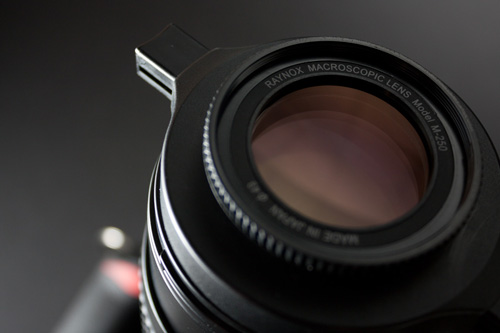
Raynox DCR-250 close-up diopter lens - this lens is quite small and uses a clip adapter to attach the camera's lens
If your camera does not have a filter thread, you can still use a close-up diopter filter, just it won't be very convenient. You'd need to hold the close-up lens in front of the camera.
Using a coupled lens as a diopter
Standard photography lenses can also be as diopters by reverse mounting them in front of your camera's lens. Reversing filter rings can be purchased quite cheaply, these have male filter threads on both sides. One side screws into the front of your lens, then the front of the lens that you want to reverse screws onto the other side.
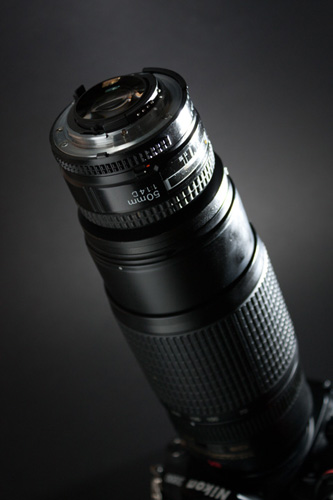
Zoom lens with a reversed 50mm lens mounted in front
However, because of the size of most photographic lenses, this is not very convenient. You are more likely to get vignetting from the reversed lens than a close-up diopter filter, and it makes the whole setup quite heavy and unwieldy.
You can work out the diopter power of the reversed lens by dividing 1000 by the focal length. So, for example, a 50mm lens gives a 1000/50 = +20 diopter. This is a very strong diopter, and gives only a very short working distance.
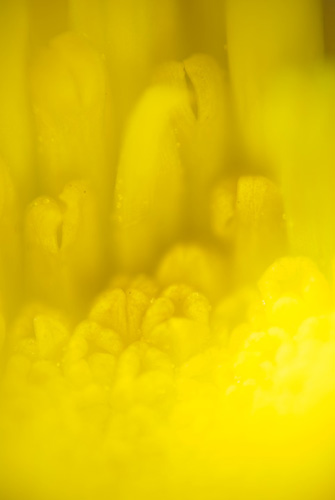
Zoom lens set to 150mm with a reversed 50mm lens mounted in front - this gives a magnification ratio of around 3:1 (3x lifesize). The reversed lens would cause vignetting when the zoom was set at lower focal lengths.
Magnification and working distance
Close-up diopter lenses are available in a range of different strengths, such as +1, +5, +8 diopters. The higher the number, the greater the magnification the lens will yield.
Diopters work by changing the focusing distance of the lens when it is set to infinity focus. The focus distance can be worked out by dividing 1000mm (1 meter) by the diopter strength. For example, a +8 diopter filter results in a focus distance of 1000/8 = 125mm.
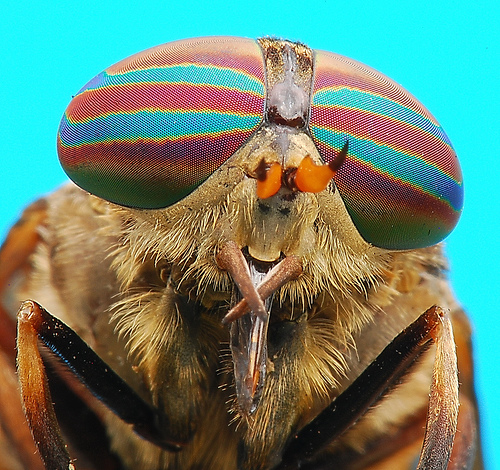
The eyes have it . by graftedno1 on flickr (licensed CC-BY-ND)
This focus distance is not dependent on the lens that the diopter is used with. Any lens set at infinity focus will focus at the focus length of the diopter. It stands to reason then, that diopters work best with longer focal length lenses, e.g. 50mm - 300mm. A 300mm lens used at a focus distance of 125mm (using the earlier example of a +8 diopter) will produce a higher magnification image than a 24mm lens used at a focus distance of 125mm.
To work out the closest focusing distance of a lens + diopter combination, you first need to convert the lens' minimum focusing distance into a diopter power. You can do this by dividing 1000 by the closest focusing distance measured in millimeters. So, for example, a lens that can focus at half a meter gives a diopter of 1000/500 = 2.
You then add this onto the value of the close-up diopter filter. So a 300mm lens focused at half a meter with a +8 diopter lens attached gives a focus distance of 1000 / (8 + 2) = 100mm.
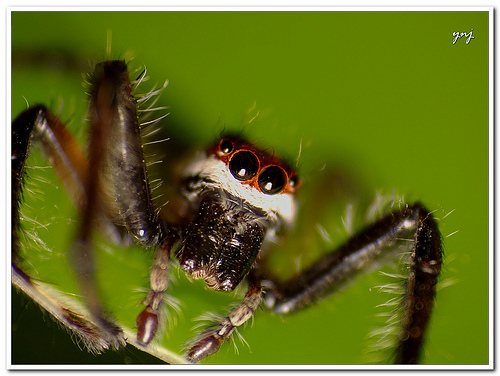
Red Band Eyes (Explored #122) by Yogendra174 on flickr (licensed CC-BY)
The magnification obtainable with a diopter filter can be calculated as the total diopter of lens and diopter multiplied by the focal length of the lens in meters. Using our previous example of a 300mm lens that can focus down to half a meter used with a +8 diopter, this gives (8 + 2)*0.3 = 3. So, this would give a magnification ratio of 3:1, or 3x lifesize.
Using a different example, let's say we have a 24mm lens that can focus down to 20cm. This gives a diopter power of 5 (1000/200). If we use a +8 diopter close-up lens on it, this will give us a magnification of (8 + 5)*0.024 = 0.312, about 1:3 or one third life size. Nowhere near as good as the longer focal length lens.
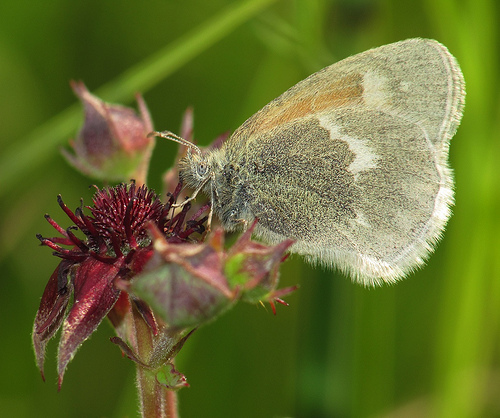
Coenonympha tullia by zxc6789 on flickr (licensed CC-BY)
So while diopter lenses do let wide-angle lenses focus closer, and achieve higher magnifications than they can normally, they are much more effective with longer focal length lenses.
Vignetting
Another reason why they are best used with longer focal lengths is to avoid vignetting. Diopter lenses are quite thick compared to a standard lens filter. Many of them are also produced in small sizes. For example, the Raynox DCR-250 close-up lens is around 42mm in diameter. On wide-angle to medium lenses this will result in the frame being black round the edges with just a smallish image circle in the middle.
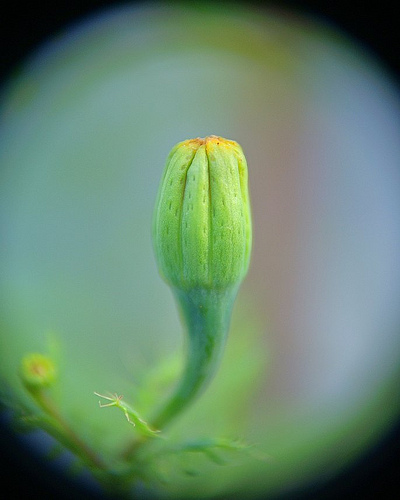
Untitled by { pranav } on flickr (licensed CC-BY)
If you are looking at purchasing a diopter filter, then be sure that it is large enough to work suitably with the lenses you want to use it on. Both Marumi and Canon produce high quality close-up filters that are available in large thread sizes such as 77mm. (Though of course, they cost and weigh more than the same filters in smaller sizes).
Stacking
Diopter lenses can also be stacked. This just adds the diopter powers together. So using stacked +2 and +5 diopter close-up filters on a lens will have the same effect as using a +7 diopter.
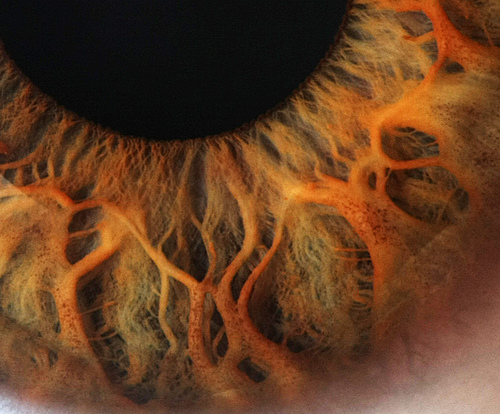
Eye Close Up by Robert D Bruce on flickr (licensed CC-BY-ND)
In general it is better to use a single high power diopter (if you can) rather than stacking lower power diopters. The more pieces of glass you put in front of the lens, the more image quality is likely to degrade.
Focusing
Most cameras won't autofocus effectively when using an add-on diopter lens. If your camera allows manual focus, then switch it into manual focus mode.
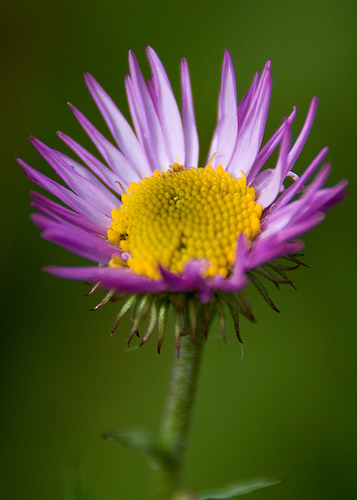
IMG_3021-A by sandyhd on flickr (licensed CC-BY)
If your camera doesn't have manual focus, check if your camera will allow setting autofocus to some button other than the half-press of the shutter button. This way you won't get the camera trying to autofocus every time you take a shot.
For focusing, you can just move the camera towards the subject until it comes into focus, then press the shutter to take the photo.
If the camera does not allow you to decouple autofocus from the shutter button, then half press for the camera to try (and fail) focusing. Keep the shutter button half pressed, and now move the camera towards the subject until it comes into focus. Fully press the button to take the photo.
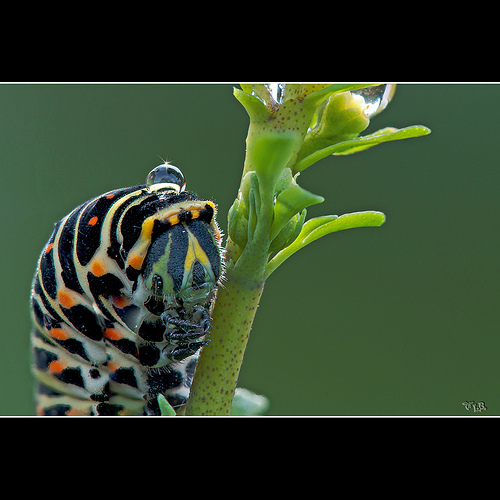
the last caterpillar 2010 by Outburner on flickr (licensed CC-BY-ND)
If your camera can autofocus with the close-up diopter attached, then lucky you! 🙂 For cameras with manual focus ability, I would still recommend using manual focus, since it means there is no autofocus delay when taking the photo.
Lens quality
When looking at close-up diopter lenses, it is best to avoid the cheap sets being sold on eBay. Good quality glass costs money. Raynox, Canon, and Marumi all have good quality achromatic close-up lenses for sale. These produce sharp images with very little chromatic aberration.
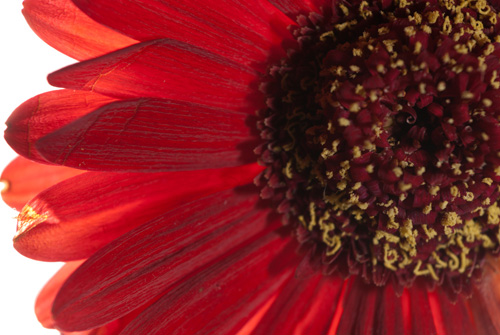
Olympus MCON-35 achromatic close-up lens
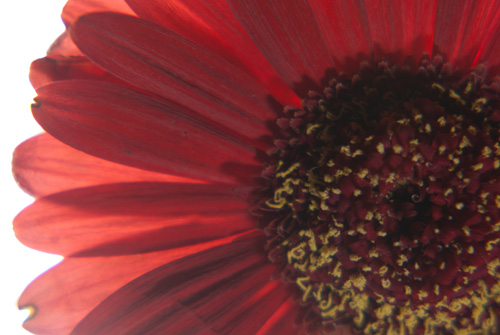
Cheap ebay +1 and +2 diopter lenses stacked - notice the loss of contrast, image softness, and aberrations compared to the more expensive Olympus lens
Depth of Field
Depth of field in close-up and macro photography tends to be very shallow, even when using a small aperture. When using a diopter filter, depth of field can often appear shallower than it does when using alternative methods of obtaining close-up and macro magnifications.
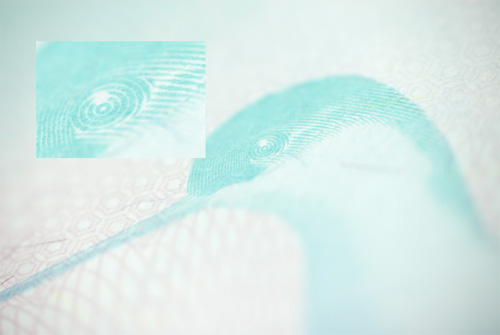
Zoom lens set to approximately 125mm focal length with a +8 close-up diopter filter, Working distance around 12.5cm
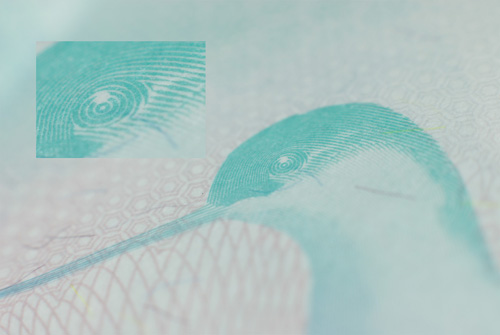
50mm lens with 48mm of extension tubes, Working distance around 6cm
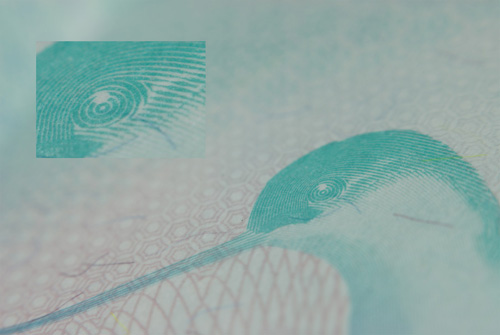
Reverse mounted 50mm lens, Working distance around 10cm
As you can see from the above images, depth of field is more compressed when using the longer focal length with a diopter lens. But there is also no light loss from using a diopter. (The photos were all taken using the same exposure settings). This means that for a given exposure, you can use a smaller aperture setting with a diopter lens than you could with a reversed lens or extension.
As before, here's a round up of the main advantages and disadvantages of diopters compared to other methods of macro photography:
- Can be used with any camera or lens, not just for interchangeable lens cameras.
- Depending on filter size and lens there may be vignetting at wider focal lengths.
- Depth of field is more compressed than with other methods of macro / close-up photography.
- Cost is quite a lot less than a new macro lens, though a lot more expensive than a reverse lens adapter.
- No light loss, unlike all other methods of macro / close-up photography.
- Can be used with macro lenses or lenses mounted on extension tubes / bellows to increase magnification even more.
- Small and lightweight.
- Working distance generally larger than using a reversed lens or lens with extension tubes.





Great information on diopters, thanks very much.
If a reversed lens is basically a diopter (50mm = +20), then why is there light loss with the reversed lens? I’m trying to understand the difference in how light travels through a diopter vs. a reversed lens. Would there be a benefit to using a reversed lens together with a diopter for greater magnification, say on a telephoto lens (assuming it would work)?
I’ve seen people put microscope lenses on the end of telephoto lenses — perhaps a reversed lens would act basically like a low magnification microscope lens?
I’ve got diopters, extension tubes, a macro lens and have experimented with reversed lenses, but am trying to figure out an optimal setup to go well beyond 1:1 with very sharp results (and a reasonable depth of field).
Thanks again!
Shortly after I got my first DSLR, this article helped me decide on which two-element closeup lens to get so I could take better macro-style photos with my telephoto lens on the trail. It turned out to be the right decision for my needs, and I’ve taken quite a few really great images with it since – even a couple I’ve gotten paid for!
I just found this again because I’m looking at another purchase and I wanted to run some numbers, and this is once again the best resource I can find on the subject – go figure.
Thank you so much for everything in here.
Also, keep in mind that the larger aperture the nonreversed lens is, the less chance for vignetting. Benefit of coupling lenses is that some great image quality can be achieved, and magnification can easily exceed that of even the strongest diopters, excluding perhaps the Raynox.